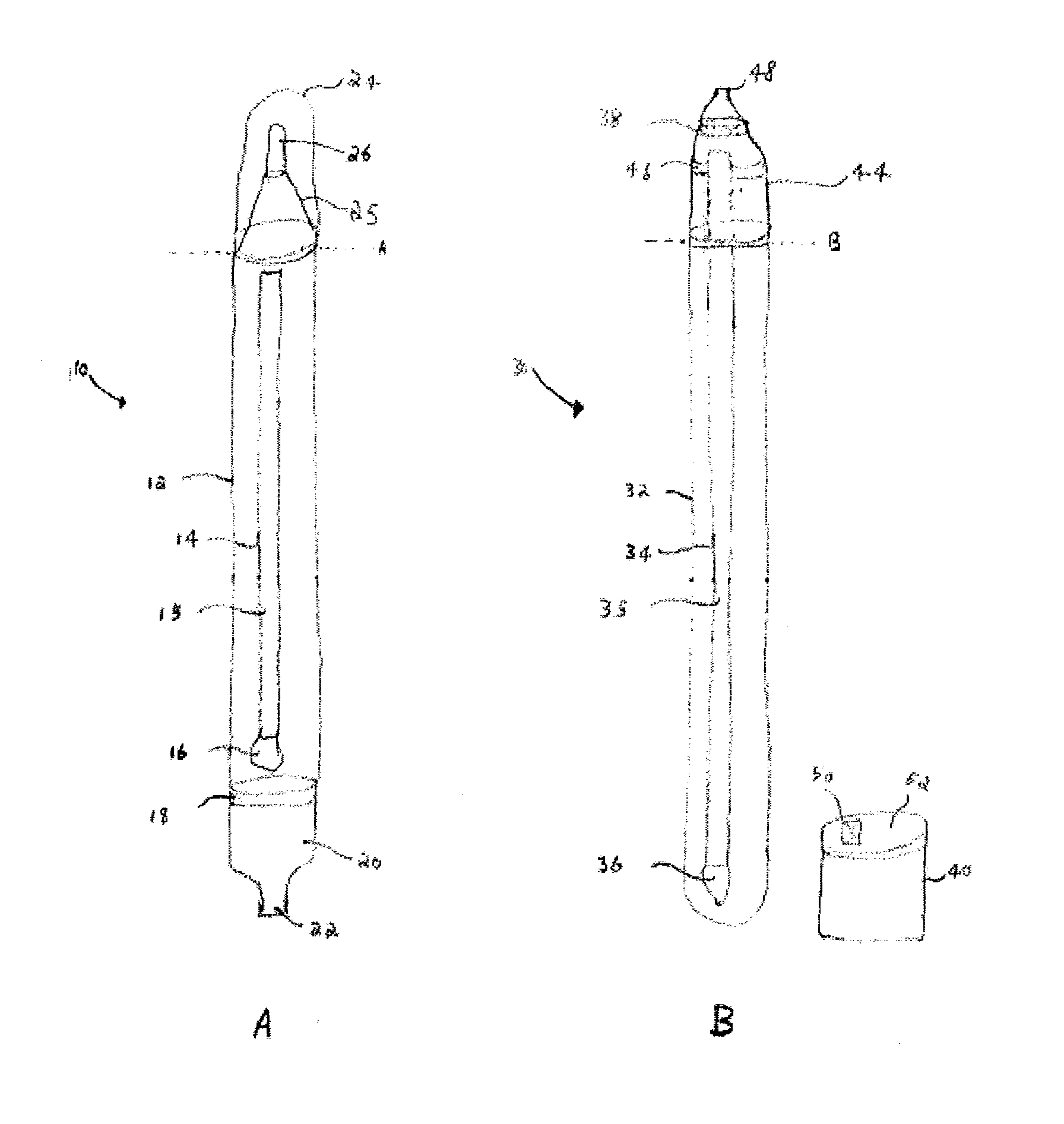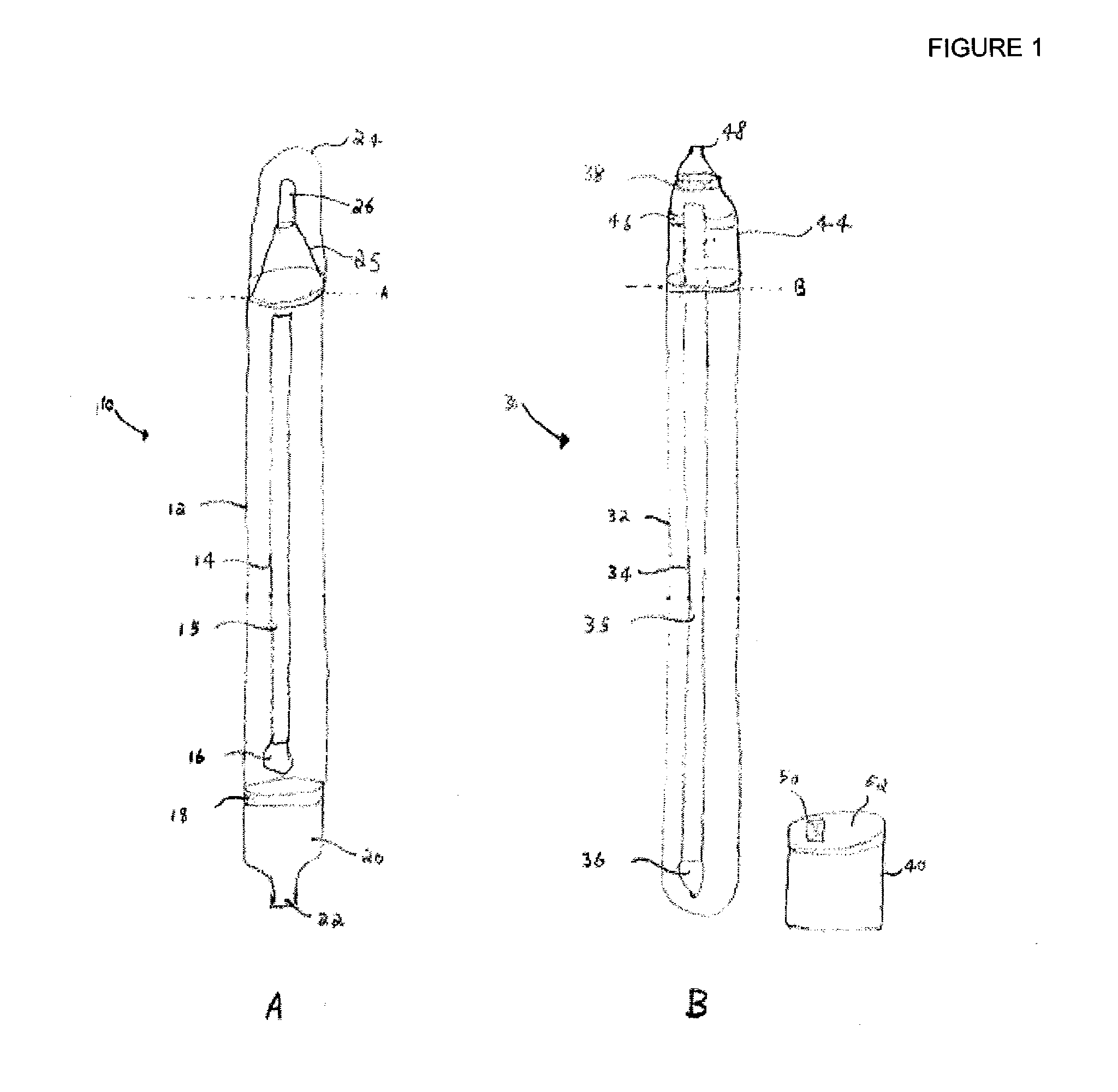Flow cytometry-based systems and methods for detecting microbes
a flow cytometer and microorganism technology, applied in the field of methods to detect microorganisms, can solve the problems of time-consuming steps, assay methods, and the use of microbial dna amplification by polymerase chain reaction (pcr), and achieve the effect of optimizing the performance of a flow cytometer, increasing the sensitivity of at least one detection channel, and increasing the gain
- Summary
- Abstract
- Description
- Claims
- Application Information
AI Technical Summary
Problems solved by technology
Method used
Image
Examples
experimental examples
The following examples are provided to more fully illustrate some of the embodiments disclosed hereinabove. It should be appreciated by those of ordinary skill in the art that the techniques disclosed in the examples which follow represent techniques that constitute exemplary modes for practice of the disclosure. Those of ordinary skill in the art should, in light of the present disclosure, appreciate that many changes can be made in the specific embodiments that are disclosed and still obtain a like or similar result without departing from the spirit and scope of the disclosure.
In the examples that follow, the flow cytometry methods set forth hereinabove are collectively referred to as RAPID-B or LRB methods.
example 1
Flow Cytometry Evaluation of E. Coli in Bagged Salad, Cookie Dough and Salami
Bagged salad, cookie dough and salami were procured from various grocery markets. Each sample was prepared for testing in accordance with the FDA Bateriological Analytical Manual (BAM) Chapter 4a the day before testing. All prepared sample weights were 25 grams, weighed before the inoculation or the addition of enrichment broth. All samples for a given product type were ‘made-up’, mixed and tested as a single batch. The BAM specified 9:1 proportion of growth media to sample was observed in all testing. EHEC Enrichment broth mTSB (modified Tryticase Soy Broth, BAM Option 1) was used for all reference testing. Spiking inoculation levels were verified by a 5 PCA plate array for each inoculation level; inoculation levels were calculated based on the average of the results from the array.
All product samples were spiked with non-Shiga toxin producing E. coli O157:H7, ATCC reference code 43888. Samples of salami a...
example 2
Flow Cytometry Evaluation of E. coli in Spinach, Jalepeño Peppers and Ground Beef
Spinach, jalapeno peppers and ground beef were procured from various grocery markets. Sample preparation and data acquisition for both the RAPID-B and Reference Methods were performed essentially as outlined in Example 1.
Testing results for spinach, jalepeño peppers and ground beef are summarized in Tables 7-9. FIGS. 12A and 12B present illustrative gated flow cytometry emission plots obtained by RAPID-B methods for jalepeño pepper matrices at various dilution levels. FIG. 13 presents an illustrative gated flow cytometry emission plot for a negative control jalepeño pepper matrix. Sensitivities and false negative rates comparable to those of Example 1 were observed. The Reference Method in this case produced a false positive for sample B-7.
TABLE 7E. coli 0157 Testing of Spinach Using RAPID-B Flow Cytometry MethodsApprox.Approx.Inocul.Inocul.Qualitative ResultVol.BAMLRBFinalFinalLRB Cell CountBrothSample...
PUM
| Property | Measurement | Unit |
|---|---|---|
| wavelength | aaaaa | aaaaa |
| wavelength | aaaaa | aaaaa |
| wavelength | aaaaa | aaaaa |
Abstract
Description
Claims
Application Information
 Login to View More
Login to View More - R&D
- Intellectual Property
- Life Sciences
- Materials
- Tech Scout
- Unparalleled Data Quality
- Higher Quality Content
- 60% Fewer Hallucinations
Browse by: Latest US Patents, China's latest patents, Technical Efficacy Thesaurus, Application Domain, Technology Topic, Popular Technical Reports.
© 2025 PatSnap. All rights reserved.Legal|Privacy policy|Modern Slavery Act Transparency Statement|Sitemap|About US| Contact US: help@patsnap.com



